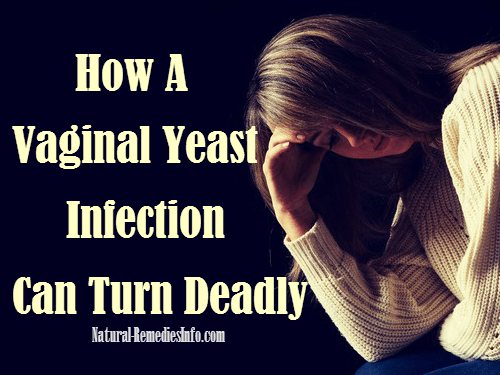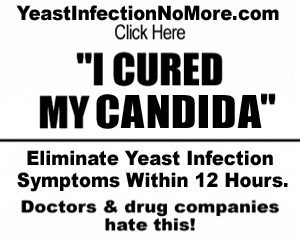As women, we are all too familiar with discomfort associated with a vaginal yeast infection. The article, vaginal yeast infection discusses the primary infection. However, did you know, that vaginal yeast infections might lead to a more serious condition? This article provides information about how a vaginal yeast infection can turn deadly – invasive candidiasis. The disease, its symptoms and at risk factors will be described as well as a few natural preventative measures you can take.

What is Invasive Candidiasis
Candidiasis is an infection caused by numerous species of yeast or candida; the most common being candida albicans.
“Invasive candidiasis is a fungal infection that can occur when candida yeasts enter the bloodstream. Once this fungus is in the bloodstream, it can spread to other parts of the body and cause infection.” – Center for Disease Control
Fungi enjoy and thrive in our gastrointestinal tract and enjoy the comforts of home in warm, moist areas of our bodies. In addition to taking up residence in our gut, the fungi also thrive inside the mouth or vagina; this is where they live, prosper and sometimes grow out of control. Overpopulation causes the infection.
What are the symptoms?
Some symptoms may include burning, itching and discharge. Left untreated, yeast can become invasive and more serious. The CDC reports that once the infection becomes invasive, you may experience fever and chills that are not alleviated with antibiotics.
It then has the ability to progress and enter to various other organs of your body like the liver, spleen, kidneys, bones, muscles or joints depending on which area of the body is the source of the infection. Resistance to antibiotics can eventually lead to organ failure. According to a 2007 report in the Clinical Microbiology Reviews, Candida yeasts are the fourth leading cause of bloodstream infections in the United States.
What are the risk factors that can increase my chances of yeast overgrowth?
If Candida is left untreated, anyone can be at risk, but some women are more prone. Some of the risk factors determined in a study from the Clinical Microbiology Reviews include the following:

- Antibiotic use
- Uncontrolled diabetes
- Genetic predispositions (hereditary)
- Frequent sexual intercourse
- High estrogen level contraceptives
- Condoms
- Spermicides
- Auto-immune diseases including HIV
Additional factors may include:
- Steroid use
- Obesity
- Douching
- Diets high in sugar
- Poor vaginal hygiene
- IUD use
- Pregnancy
No matter what type of infection you may have, it is recommended that you seek proper medical advice, especially when you experience symptoms indicating a more serious problem. In addition, if you prefer to self-treat naturally, it is also a good idea to check with your medical provider before you begin.
Natural Preventive Invasive Candidiasis Treatment
In order to prevent Invasive Candidiasis, start with the root of problem – vaginal yeast infection.
You’ve heard the cliché’ “you are what you eat.” Believe it or not, it’s true. Following a candidiasis diet can prevent a number of physical problems. The type of clothing you wear and your personal hygiene habits will also play a role in prevention. Here are some suggestions:
- Make your diet rich in vegetables, fruit, whole grains and non fat dairy products
- Eat yogurt with active cultures
- Wear either cotton or silk underwear; these fabrics absorb moisture
- Try and avoid pantyhose and tight leggings
- Keep the vaginal area clean – wash the vaginal area well and dry thoroughly
- Stay away from skin-tight clothing
- Do not stay in a wet swimsuit
- Do not douche
- Skip the bubble baths and scented soaps, pads or tampons
Unfortunately, vaginal yeast infections are part of our existence. An awareness of how serious an easily treated infection can be could save lives. Taking care of yourself and paying attention to your body is the first step to a long and healthy life.
